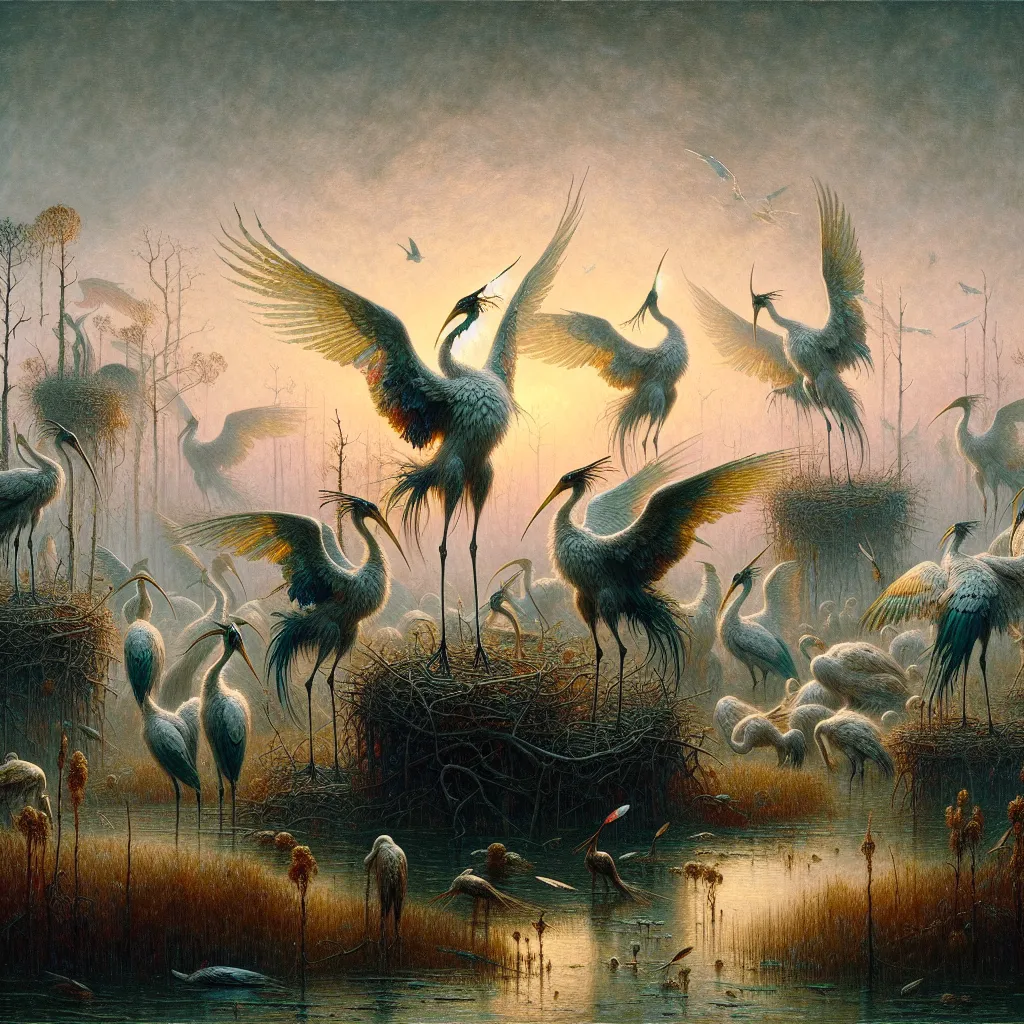
The Journey of the Storkin
In the sprawling wetlands of northern Europe, beyond the curtains of morning mist and beneath the expansive cerulean skies, resides a creature of both myth and majesty—the storkin. These bird-like beings, though much like their stork relatives in appearance, possess an intelligence and grace unobserved in ordinary creatures. Their lives are woven through legends, for the lands they inhabit are imbued with the wonders of ancient folklore.
The life of a storkin begins with a precarious cradle amidst the reeds. Pale-green eggs lay nestled together, often beneath the vigilant eye of an elder guardian, the keeper of wisdom in the storkin world. These elders are cherished for their stories, passed down through generations, tales carried by the winds and etched onto the consciousness of each newly hatched storkin.
Emerging from their eggs, storkin chicks are greeted by the symphony of nature—a chorus of rustling leaves, rushing streams, and distant calls from deep within the wetlands. Their downy feathers, speckled with the hue of dawn-lit clouds, begin to shift as they grow, revealing the striking plumage they will wear into adulthood. Their feathers are not merely for flight; they are woven with a mystical quality that reflects the storkin's connection to the natural world.
To be a storkin is to live in harmony with the rhythm of the seasons. As juveniles, they embark on the first key journey—a migration that takes them far beyond their familiar nesting grounds. With every beat of their wings, they soar across vast landscapes, guided by an internal compass that leads them to warmer climates during the cold months. This journey is not without its challenges; treacherous storms test their fortitude and endurance, yet it is through these trials that young storkin learn resilience and navigation.
During their migrations, storkin interact with other creatures of the natural world—sharing knowledge with animals ranging from the humble field mice to the sagacious barn owls. These interactions serve not only to enrich their survival skills but also to contribute to a greater narrative of cooperation among nature's diverse inhabitants.
Upon returning home, the storkin embrace the shift into adulthood. Courtship takes center stage as elaborate aerial displays and melodious songs echo through the air. These rituals are not solely for selecting a mate; they are a testament to the storkin's intrinsic understanding of beauty and communication. Once bonds are formed, pairs begin the cycle anew, building nests together in preparation for the future generation.
The storkin are remarkable architects; their nests, built meticulously from twigs, reeds, and feathers, represent the collaboration and interconnectedness of their community. Timber and leaves are intertwined with whispers of enchantment, creating sanctuaries that protect future generations from both the elements and the unseen dangers of the world.
Age does not weaken a storkin but rather endows them with greater wisdom. Elders, with a lifetime of tales, gather young storkin around them to share stories of climes beyond their view, encounters with mystical creatures, and the balance they maintain with nature. These stories are more than entertainment—they are a guide for living, invaluable lessons captured in anecdote.
The life of a storkin is one marked by cycles—the cycle of day and night, season and migration, birth and rebirth. In embracing these cycles, storkin contribute to the enduring legacy of nature’s balance, woven seamlessly into the fabric of time.
In the twilight of their incredible journey, storkin find solitude in flight, merging once more with the horizon. With wings outspread against the setting sun, they are reminders of the harmony with which life can be lived when connected to the world's wonder—a testament to the enduring spirit of the storkin.